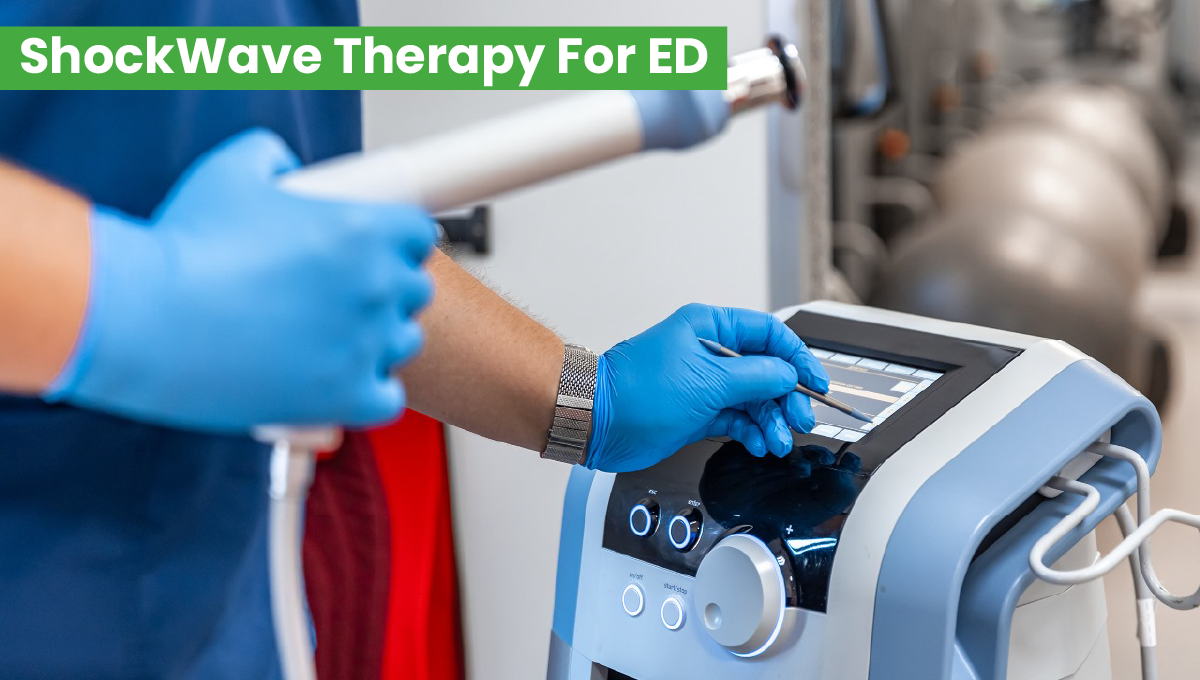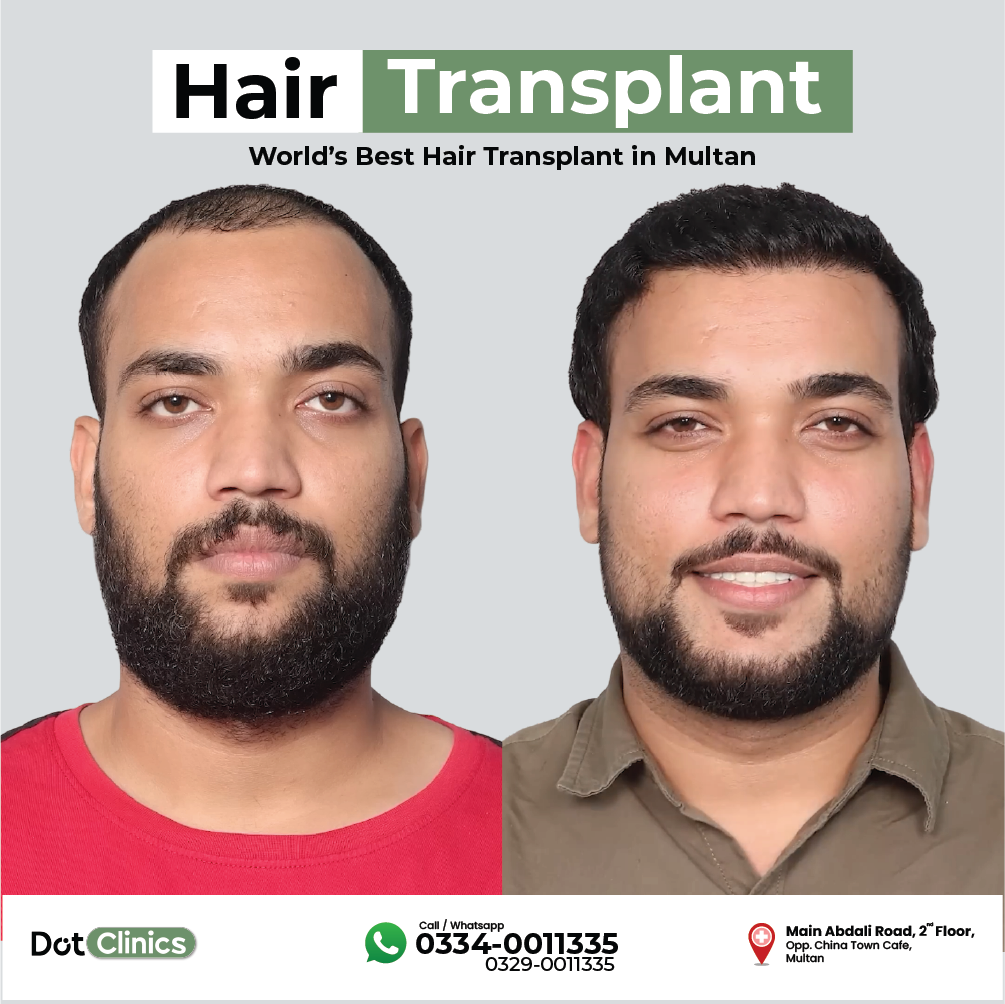
Erectile dysfunction (ED) — the persistent inability to achieve or maintain an erection firm enough for sexual activity — is one of the most common men’s health concerns. It affects millions of men globally and often impacts not just sexual function, but also self-confidence, relationships, and emotional well-being.
Over the past few years, shockwave therapy has emerged as one of the most promising, non-invasive treatments for ED. Unlike pills, injections, or surgery, this therapy aims to restore natural erectile function by improving blood flow and repairing penile tissue. This article provides an in-depth look at what shockwave therapy is, how it works, its benefits, potential side effects, treatment procedure, cost, and what current medical evidence says about its effectiveness.
Understanding Erectile Dysfunction
Erectile dysfunction can result from a variety of causes, often falling into one or more of these categories:
Vascular causes: Poor blood circulation to the penis due to atherosclerosis, high cholesterol, diabetes, or high blood pressure.
Neurological causes: Nerve damage from spinal cord injuries, multiple sclerosis, or prostate surgery.
Hormonal causes: Low testosterone or other hormonal imbalances.
Psychological factors: Stress, anxiety, depression, or relationship problems.
Lifestyle factors: Smoking, obesity, excessive alcohol use, and lack of physical activity.
Traditional treatments—like oral medications (Viagra, Cialis, Levitra), vacuum erection devices, penile injections, or implants—usually address symptoms temporarily. Shockwave therapy, on the other hand, seeks to repair and rejuvenate the erectile tissue itself.
What Is Shockwave Therapy for ED?
Shockwave therapy For Erectile Dysfunction, medically referred to as Low-Intensity Extracorporeal Shockwave Therapy (Li-ESWT), involves using low-energy acoustic waves to stimulate healing in the penile tissue. These waves are delivered via a handheld probe that emits pulsed sound waves directly to targeted areas of the penis.
This is not the same as the high-intensity shockwaves used to break kidney stones. The energy used for ED is much lower and designed to stimulate cellular repair, improve blood circulation, and trigger new vessel formation (a process known as neovascularization).
Shockwave therapy is completely non-surgical and drug-free. Sessions are usually performed in a clinic, last around 20 to 30 minutes, and do not require anesthesia or recovery time.
How Does Shockwave Therapy Work?
The main goal of shockwave therapy is to enhance blood flow and regenerate penile tissue. When the acoustic waves penetrate the tissue, they cause controlled microtrauma — tiny mechanical stresses that prompt the body’s natural healing processes.
Here’s how it’s thought to work:
1. Improved Blood Vessel Growth (Angiogenesis)
Shockwaves stimulate the release of growth factors like VEGF (Vascular Endothelial Growth Factor) and eNOS (Endothelial Nitric Oxide Synthase). These molecules promote the formation of new capillaries and blood vessels, improving circulation within the penis.
2. Regeneration of Damaged Tissue
The controlled mechanical stress encourages tissue remodeling, restoring elasticity and health to penile structures that may have degraded over time due to poor circulation or chronic disease.
3. Increased Nitric Oxide Production
Nitric oxide plays a critical role in erectile function—it relaxes blood vessels, allowing them to dilate and fill with blood during arousal. Shockwave therapy helps increase the natural release of nitric oxide in penile tissue.
4. Nerve Regeneration
Emerging evidence suggests that shockwaves may support nerve repair and sensitivity restoration, particularly helpful for men with ED after prostate surgery or pelvic trauma.
Who Can Benefit from Shockwave Therapy?
Shockwave therapy is not for everyone, but certain groups tend to respond particularly well.
Ideal Candidates:
Men with vasculogenic ED (caused by poor blood circulation).
Men with mild to moderate ED who want a natural, restorative option.
Patients who respond partially to PDE5 inhibitors (like Viagra or Cialis) but want better baseline function.
Men with ED related to diabetes or cardiovascular conditions, provided they are medically stable.
Individuals who prefer a non-invasive, drug-free solution.
Less Ideal Candidates:
Men with severe nerve damage (from spinal cord injury or radical prostatectomy).
Those with significant hormonal imbalance or psychological ED as the main cause.
Men with severe penile fibrosis or Peyronie’s disease (though shockwave therapy can help mild curvature cases).
Patients taking certain anticoagulant medications that increase bleeding risk.
Before treatment, a urologist or sexual health specialist should perform a complete evaluation to identify whether the patient’s ED is primarily vascular and suitable for this therapy.
The Shockwave Therapy Procedure
The process is simple and performed entirely in an outpatient setting.
1. Preparation
No anesthesia or numbing cream is typically needed.
The patient lies comfortably on a treatment table.
The penis and surrounding area are cleaned and prepared.
2. Treatment Application
A handheld shockwave device is placed on specific points along the penis (usually the shaft and base).
Low-intensity acoustic waves are emitted through a gel that allows energy to transfer efficiently.
A session typically delivers 1,500 to 3,000 pulses, depending on the protocol.
Each session lasts around 20 minutes.
3. Treatment Schedule
Common clinical protocols include:
Two sessions per week for 3 weeks, followed by a break, then another 3 weeks of treatment.
Some clinics offer 6 to 12 total sessions, while others may use condensed schedules depending on the device used.
4. Post-Treatment
No downtime or restrictions; patients can resume normal activities immediately.
Some men report mild tingling or soreness, but this typically resolves within a few hours.
What Results Can You Expect?
Shockwave therapy doesn’t produce instant erections—it works over time as the body regenerates tissue and improves circulation.
Timeline of Improvement
After 3–4 sessions: Many men report stronger morning erections and improved sensitivity.
After 6–12 sessions: Noticeable improvements in erection firmness and duration.
At 3 months: Peak benefit is often achieved. Some patients experience continued improvement up to 6 months post-treatment.
Duration of Results
Studies suggest improvements may last 6 to 18 months before fading gradually.
Booster sessions can help maintain results over the long term.
Success Rates
Clinical trials show improvement in 60–80% of men with vasculogenic ED.
Response rates are higher in mild to moderate ED than in severe cases.
Advantages of Shockwave Therapy
Non-invasive and painless: No needles, surgery, or recovery period.
Drug-free: Suitable for men who can’t tolerate or don’t want medication.
Restorative: Targets the root cause — poor blood flow — rather than just symptoms.
Convenient: Short sessions that fit easily into a routine.
Safe: Minimal side effects and no systemic impact.
Synergistic: Can be combined with lifestyle changes and other ED treatments for enhanced results.
Potential Side Effects
While generally very safe, some mild side effects can occur:
Redness or mild swelling in the treated area
Temporary tingling or discomfort
Minor bruising (rare)
Slight sensitivity for a few hours post-treatment
Severe complications are extremely rare when performed by trained professionals using approved medical devices.
Comparing Shockwave Therapy with Other ED Treatments
Treatment TypeMechanismDuration/ResultsInvasivenessCommon IssuesPDE5 inhibitors (Viagra, Cialis)Temporarily increase blood flowWorks for a few hoursNon-invasiveDoesn’t work for all; side effects like headache or flushingPenile InjectionsInduce direct vasodilationWorks for 30–60 minsMinimally invasivePain, priapism (rare)Vacuum Erection DevicesDraw blood mechanicallyImmediate effectNon-invasiveCan feel unnaturalPenile ImplantsSurgically implanted devicePermanent solutionInvasive surgeryRisk of infection, mechanical failureShockwave TherapyStimulates natural vascular regenerationLasts 6–18 monthsNon-invasiveRequires multiple sessions; gradual effect
Evidence from Clinical Research
Over the last decade, multiple clinical trials and meta-analyses have investigated the role of Li-ESWT in treating ED.
Key findings from research:
Studies consistently show significant improvement in IIEF scores (International Index of Erectile Function) after 6–12 sessions.
The greatest benefit is seen in men with mild or moderate vascular ED.
Several trials report that previously non-responsive patients to PDE5 inhibitors begin responding after completing shockwave therapy.
Improvements have been maintained for up to 12 months, with some decline over time.
Reported adverse effects are rare and mild, confirming its excellent safety profile.
Although not yet considered the universal “gold standard,” the volume of positive evidence continues to grow, and professional urological associations now recognize it as a legitimate therapeutic option for properly selected patients.
Cost and Availability
The cost of shockwave therapy varies depending on location, clinic reputation, and the device used.
In many countries, each session costs between $200–$500 USD.
A complete treatment series (6–12 sessions) can total $1,500–$3,000 USD on average.
Because it’s often classified as a wellness or regenerative therapy, insurance rarely covers it.
Despite the expense, many men consider it worthwhile for the potential of long-lasting natural erections without ongoing medication.
Aftercare and Maintenance
After completing treatment, maintaining good overall health is essential to preserve the results. Recommended practices include:
Exercise regularly (improves circulation and nitric oxide production).
Eat a heart-healthy diet rich in fruits, vegetables, whole grains, and lean proteins.
Quit smoking and limit alcohol intake.
Manage chronic conditions such as diabetes and hypertension.
Reduce stress through mindfulness or therapy if needed.
Maintain sexual activity, which supports penile oxygenation and vascular health.
Booster sessions can be discussed with the doctor if improvements start to fade.
Limitations and Current Controversies
While promising, shockwave therapy isn’t perfect. There are still unanswered questions:
Optimal treatment protocol (how many sessions, what energy level, what frequency).
Long-term durability of results beyond two years.
Variability between different devices and manufacturers.
Need for larger randomized controlled trials with standardized reporting.
Still, it remains one of the few treatments that aim to restore natural function rather than just temporarily treat symptoms.
The Future of ED Treatment
Shockwave therapy represents a major step toward regenerative sexual medicine. Researchers are now exploring combined approaches, such as shockwave therapy with platelet-rich plasma (PRP) or stem cell therapy, which may further enhance tissue regeneration and erectile recovery.
Ongoing studies aim to refine protocols, identify biomarkers predicting response, and improve device technology for even greater precision and results.
Key Takeaways
Shockwave therapy for ED is a non-invasive, drug-free treatment that uses low-intensity sound waves to stimulate tissue repair and new blood vessel formation in the penis.
It is most effective in men with mild to moderate vasculogenic ED.
Treatment usually involves 6–12 sessions over several weeks, with improvements appearing gradually over 1–3 months.
Benefits can last up to 12–18 months, and side effects are minimal.
It’s an excellent option for men seeking a natural, restorative approach to ED instead of relying solely on medication.
Conclusion
Shockwave therapy has revolutionized the way doctors approach erectile dysfunction. It represents a shift from treating symptoms to rejuvenating the body’s natural ability to achieve an erection. By enhancing blood flow, regenerating tissue, and improving vascular health, it offers men a safe and effective path toward better sexual performance and confidence.
While more research will continue to refine the technology, shockwave therapy already stands as one of the most exciting and clinically valuable developments in men’s sexual health — a therapy that doesn’t just mask the problem, but works to heal it from within.



Write a comment ...